Iraqi Kurdistan
Things to DO
Suleymania
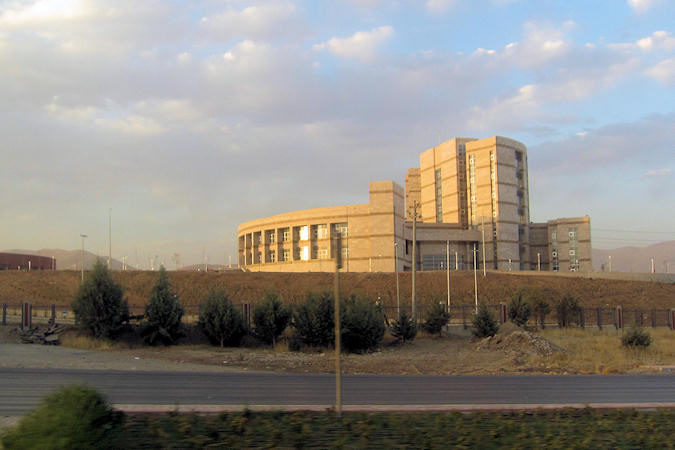 |
|||||
Cosmopolitan Sulaymania is Iraqi Kurdistan’s second-largest city, with a population of about
1.500.000 peopleand the most liberal and Westernised city in Iraq.
Born in 1784, Sulaymaniyah is a young city by Mesopotamian standards, and that youthful vibrancy shows – by
Iraqi standards this city is trendy, fashion forward, chic, sophisticated and free spirited.
It has a strong arts and cultural scene with great museums and several universities.
It was founded by a Kurdish prince Ibrahim Pasha Babanm who named it after his father Sulaiman
Pasha.
During WWI, the city was the centre of Kurdish nationalism.
The PUK, one of two major political parties in Iraqi Kurdistan, was founded in Sulaymaniyah in 1975.
During and after the Iran-Iraq war, Saddam Hussein brutalised Sulaymaniyah’s residents until the Kurdish
uprising of 1991.
Independent Media Centre
 |
|||||
The Independent Media Centre in Kurdistan (IMCK) offers training to journalists of all media,
consultancy to newspaper editors and TV station management, internet courses for newspaper sites, workshops
for photographers and media training for politicians.
The Independent Media Centre in Kurdistan was set up in May 2008 to improve the quality of the media in Iraq
in order to help the democracy in Iraq to develop.
IMCK mainly works inside Iraqi Kurdistan and with all media, both party and independent. IMCK strives to
improve the quality of the existing media, the quality of journalism and that of the entire media landscape
in Iraqi Kurdistan and Iraq.
The aim of the IMCK is to bring civil journalism, or reporting on people for people, to Iraq.
Amna Suraka
Amna Suraka also known as the "Red Security" museum because of its red-colored walls,
served as the northern headquarters of the Iraqi Intelligence Service, or Mukhabarat.
Amna Suraka operated from 1979 until 1991, at which point the Kurdish Peshmerga (armed Kurdish fighters)
attacked and won control of the prison from the Ba'ath party (Saddam's party).
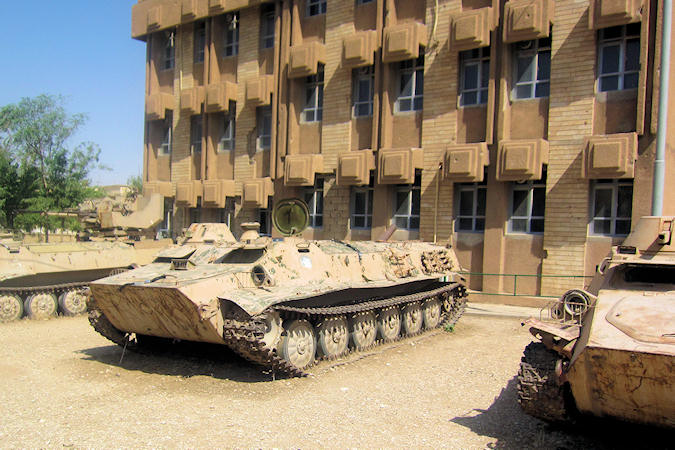 |
|||||
The prison has been preserved in its original condition - bullet holes coat the outer walls and the blankets
and pillows present at the '91 uprising are still lying on the floor of the inner cells.
The courtyard contains a weapons display of Iraqi tanks, artillery, mortars and otherinstruments of death.
Passing through exterior corridors covered by barbed wire, you enter the main building that contains several
prison cells and torture chambers. Many rooms contain gruesome life-like sculptures of Kurdish prisoners,
created by local artist Kamaran Omer.
Tunnel of Mirrors
Over 4.500 small light bulbs patterned the ceiling and over 182,000 jagged glass pieces were cemented
to the walls of the narrow hallway. Each individual piece of glass represents one victim killed under Saddam,
and each light represents each Kurdish village destroyed under his reign. Over 182,000 Kurds dead and over
4.500 villages destroyed at the hands of Saddam.
Ismail Khayat
Ismail Khayat was born in 1944 in Khanaken but now living in Sulaymaniyah. He has been one of the main activists and inspirations in the Iraqi and Kurdish arts movement. He taught art for over 24 years, as well as supervising all arts activities in the region. His art can be found hanging in many galleries and private collections including New York, Iraq, Japan and Europe.
 |
|||||
He is often referred by fellow artists as the Grandfather of Kurdish Art for this present generation. In
his series, Ismail Khayat, seeks to honour the 182,000+ Kurds who were killed as part of the Anfal policies
of the Saddam Hussein regime. Each face or mask looks to represent one of those that were slaughtered.
During the intra-Kurdish conflict (1994-1998) in the centre of one of the worst areas for the bloodshed,
Ismail Khayat painted rocks, trees, bullets, shells and other found objects. He inscribed the words
“Peace for Kurdistan” in Kurdish, Arabic and English amongst other peace symbols and words.
The mountainside soon became a safer area. Ismail invited the leaders of both the PUK and the PDK to take
part in visual acts of peace, by buriing stones marked with the Kurdish words for fighting, pain, death and
anger.
This event appears to be widely regarded as one of the main turning points in the dialogue between these
two opposing parties.
Nature Iraq
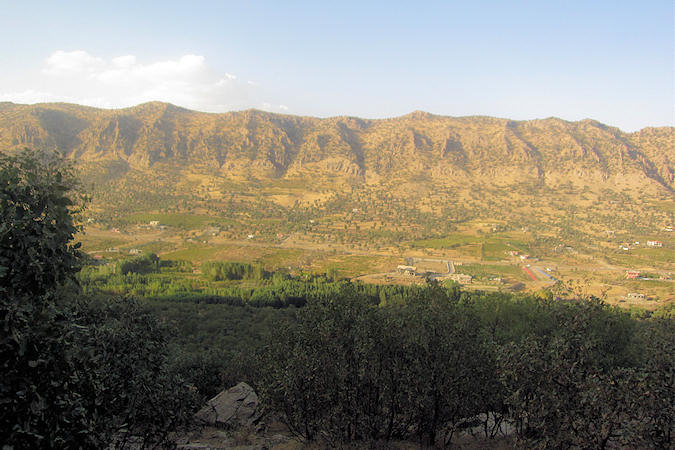 |
|||||
Nature Iraq is an Iraqi non-governmental organization registered in Iraq, accredited to the
United Nations Environment Programme (UNEP) and Iraq’s first and only Affiliate to Birdlife International.
They work to protect, restore, and preserve Iraq’s natural environment and the rich cultural heritage it
nourishes.
The work at Nature Iraq involves direct hands-on involvement with all aspects of Iraq’s environmental health.
After years of neglect and ravaging abuse due to 35 years of war and sanctions, Iraq’s environment is not
only in great need of care and rebuilding, but also and more importantly, is in dire need of an overall
evaluation of its present condition.
This is especially true as our country’s leaders move forward with reconstruction and socio-economic
development efforts that will allow Iraq to play a positive role within the global environmental community.
Nature Iraq recently hosts an Eco Camp at the base of Peramgroon mountain, outside Sulaimani.
Halabja
 |
|||||
In the final days of the Iran–Iraq war, Halabja found itself on the front line, occupied by Iranian
troops and Kurdish Peshmerga forces allied with Iran.
On the morning of 16 March 1988, Saddam Hussein’s Ba’athist forces launched a counter strike, bombarding the
city with conventional air strikes and artillery.
At about 3pm, Iraqi jets flying low overhead began dropping an unusual kind of bomb that left a smell of
sweet apples – chemical weapons. In less than 30 minutes, 5.000 men, women and children were dead and
7.000 injured. Human Rights Watch has declared the massacre an act of genocide.
Nearly 25 years on, Halabja has never fully recovered. It’s a poor, run-down village with high rates of
poverty and unemployment.
As you enter the town, the first thing you’ll notice is a small roadside statue modelled on the most
famous photograph of the massacre, depicting a lifeless elderly man on the ground shielding his dead grandson.
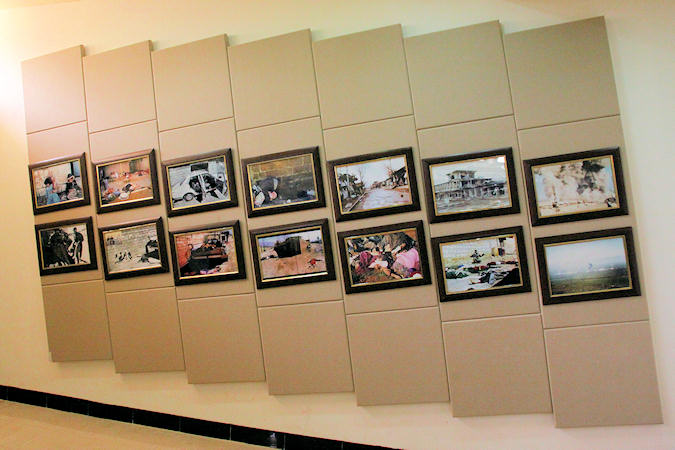 |
|||||
The road behind the statue leads to the controversial Monument of Halabja Martyrs, a 30m-tall
cenotaph and museum.
In 2006 villagers stormed the monument and set it on fire, angry that the government was spending money on
the dead instead of helping the living. The monument has since been rebuilt.
The museum, which portrays the horror of that day and commemorates those who died, has recently opened. It is
notmade for pleasant viewing.
In Halabja Cemetery, thousands of victims of the chemical attack are buried in mass graves under
giant, black-and-white marble blocks.
Nearby, a grassy field contains hundreds of neatly arranged white headstones bearing the names of the
dead.
A sign at the entrance of the cemetery is unforgiving: ‘It is not allowed for Ba’athists to enter’.
Ahmadawa
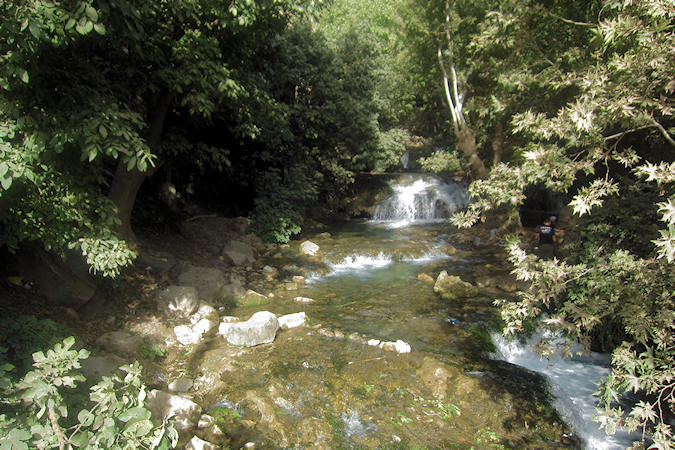 |
|||||
The resort village of Ahmadawa, 62km southeast of Sulaymaniyah near the Iranian border, is a
wonderful place of natural beauty with plenty of opportunities for hiking, swimming and picnicking.
Hidden in a deep and narrow green gorge, the resort is surrounded by walnut, pomegranate and fig trees,
attracting visitors to their cool shade.
A small cascading river runs along the base of the canyon. From the entrance of the gorge, hike up the 3km
very rough dirt road to reach a spectacular 30m-high waterfall.
On Fridays in spring, summer and autumn, busloads of Kurds in colourful traditional dress descend on Ahmadawa
to enjoy weekend picnics, filling the canyon with Kurdish music and the smells of barbecues.
There are several kebab restaurants at the entrance to the gorge.